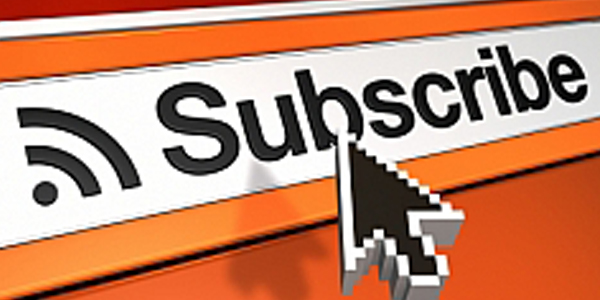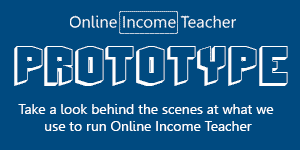An RSS Feed does not really hold enough SEO (Search Engine Optimization) power to warrant you paying it any extra attention. However, the RSS Feed as a tool is a very powerful one if you have one set up for your site. It has the potential to drive repeat traffic to your website/blog from returning visitors. The problem is that many people do not understand how to use RSS Feeds to their full capacity.
This article will help you get up to speed when using your RSS Feed.
Tips To Help You With Your RSS Feed
Getting People To Sign Up To Your RSS Feed
This is without a doubt the hardest part of getting traffic via your RSS feed. There is no point in trying to trick people into signing up to your RSS feed, and there is no point in trying to force them to sign up by restricting access to your site otherwise. You need to get your viewers to willingly accept your RSS Feed. The user needs to be convinced that they want to come back next week or next month. That is why getting people to sign up to your RSS feed is the hardest part.
- The easy advice – Make your website or blog better quality.
- The intermediate advice – Engage with your viewers so that they believe your blog or website may offer them something.
- The hard advice – Target your users so that you appeal to them directly. You need to engage with them but then anticipate the things they want and let them know that you can give it to them. Furthermore, you must show them that you can give them more and more each week/month if they are willing to come back and visit.
Know What Your RSS Feed Is
Your RSS feed is not a magical toy and its search engine SEO power is limited. You need to understand that the RSS feed is the thing that comes last. It is not the sale – it is the handing over of the money (metaphorically speaking). You need to convince the user that they should revisit your site, and when they agree, you push the RSS feed under their nose.
Some people believe that if they just get people to sign up to the RSS feed that the user will return automatically, but they will simply forget you and delete your Feed when they have a moment. You need to have the user in an acceptable and agreeable state so that they will actually use the RSS feed when they see a new entry appear. Metaphorically speaking, the RSS feed is not the selling tool, it is the acceptance or payment tool.
Getting People To Care When Their RSS Feed Shows A New Entry
If your new content is interesting enough then people will check their RSS feed to see when your newest entry is out. A lot of the time, it is the previous post that sells future ones. If your content posts are very good then you need not worry about getting people to care about your RSS feeds newest entry. If your last post was a little hit or miss then you should finish it with a mention about how good your next post is. You could even add a little preview of next weeks to get people interested in advance.
Make Sure That New Entries Are Added Into The RSS Feed
Not making sure that your RSS feed is updated is nothing short of foolish. Sign up to your own RSS feed so that you can check to see if your updates are filtering through correctly. Should any errors arise, you will be able to fix them straight away.
Make Sure That Minor Updates Do Not Appear
This is very important, because if you go back and make small revision to an old post then you do not want it coming up on your RSS feed. You also do not want any small additions to come up on your RSS feed. The only thing that should show up as “New” on your RSS feed should be full and complete content posts.
Make Sure Your Feed Works Perfectly
Bugs on an RSS pages are the fastest way to have your RSS feed deleted. Make sure that it renders quickly and that everything loads up perfectly and looks how it is supposed to.
Reminding Your Followers That You Exist
Email newsletters are a good way of doing this. As is making sure that your brand logo appears when they look online. Little reminders that you exist will remind them to check their RSS feed.
Hold On? I Thought RSS Was Dead!
Google recently announced that they were closing down their Google Reader, probably the most widely used application for accessing RSS Feeds. Just because Google is shutting down their ‘Reader’, it doesn’t mean that RSS is dead, far from it actually. Many people still subscribe to them to stay up-to-date with their favourite sites. Blogs in-particular have some of the highest subscription rates of RSS Feeds from their regular readers.
For an alternative to Google Reader (if you were using it), checkout Feedly. You can import all your existing RSS subscriptions from Google Reader and stay up-to-date with the sites that you were following.
RSS Feeds can help to boost traffic to a site if you use them properly. The best thing about them however, is that once you set them up, you can more or less leave them to run on autopilot. Why would you not want to implement a way to drive traffic that can run automatically.
Do you allow your readers to subscribe to an RSS Feed? Do you find that your RSS Feed helps to bring in traffic to your site? What is your opinion on RSS Feeds and their future? Please let us know by leaving a comment below!



CommentLuv vs Disqus – Why I Don’t Use CommentLuv!